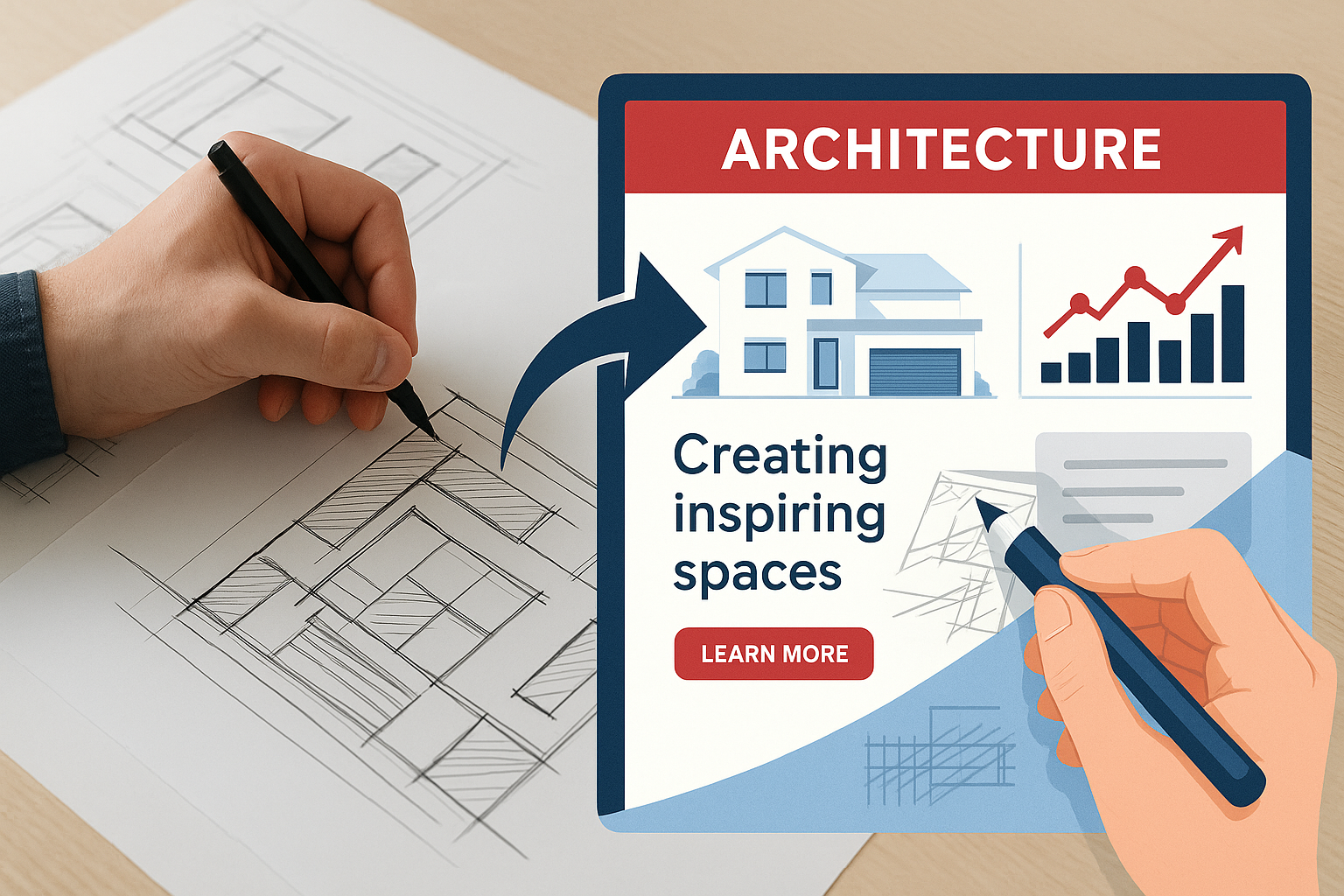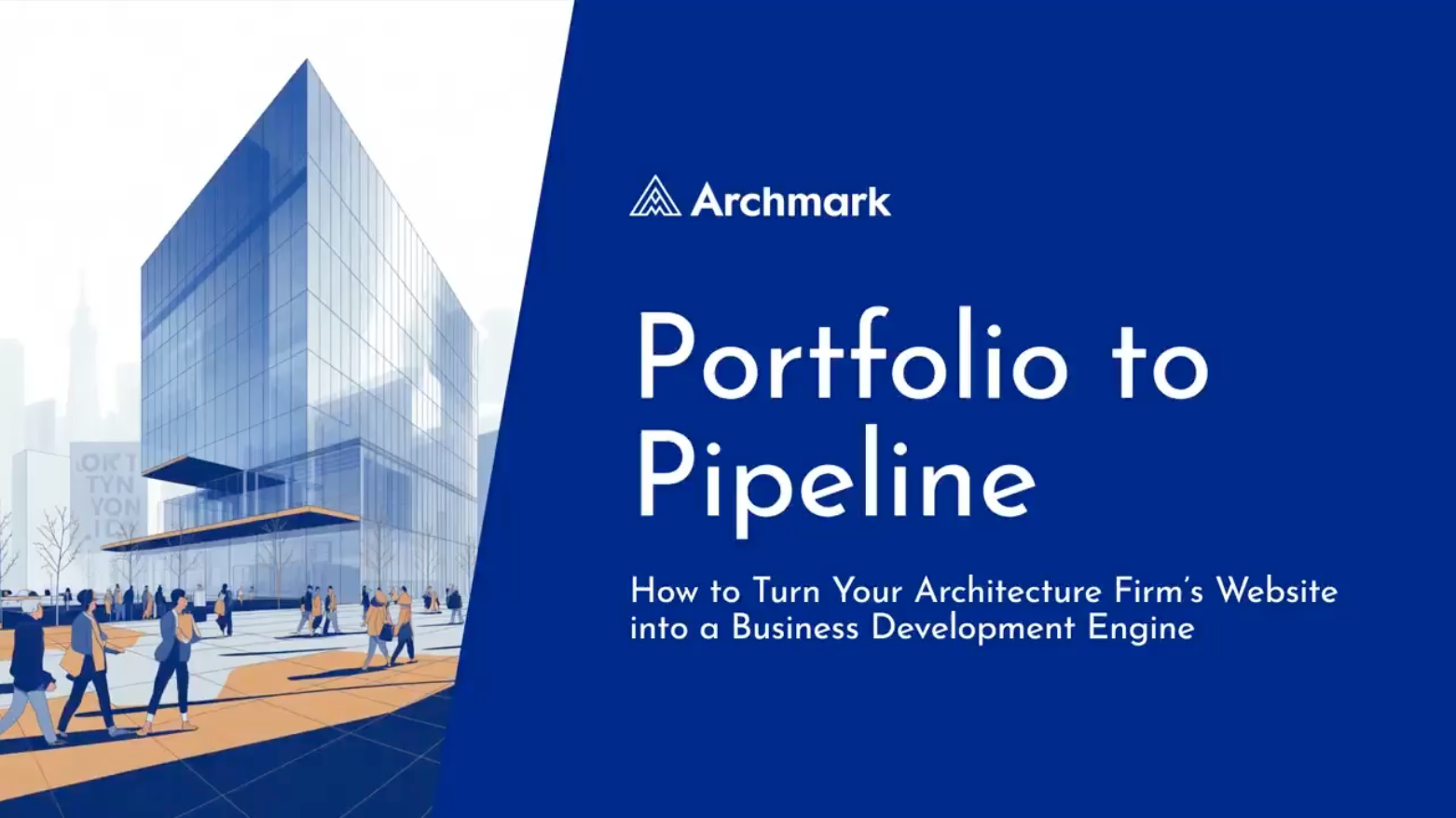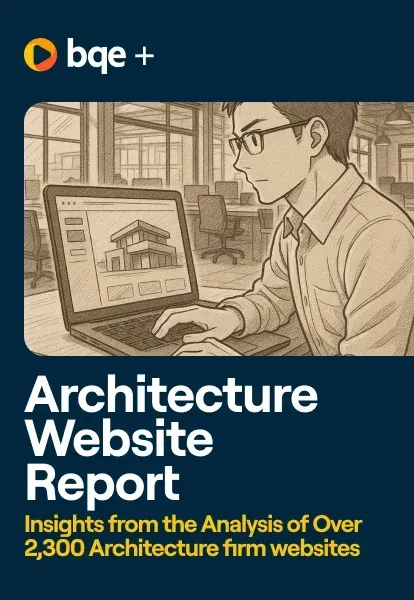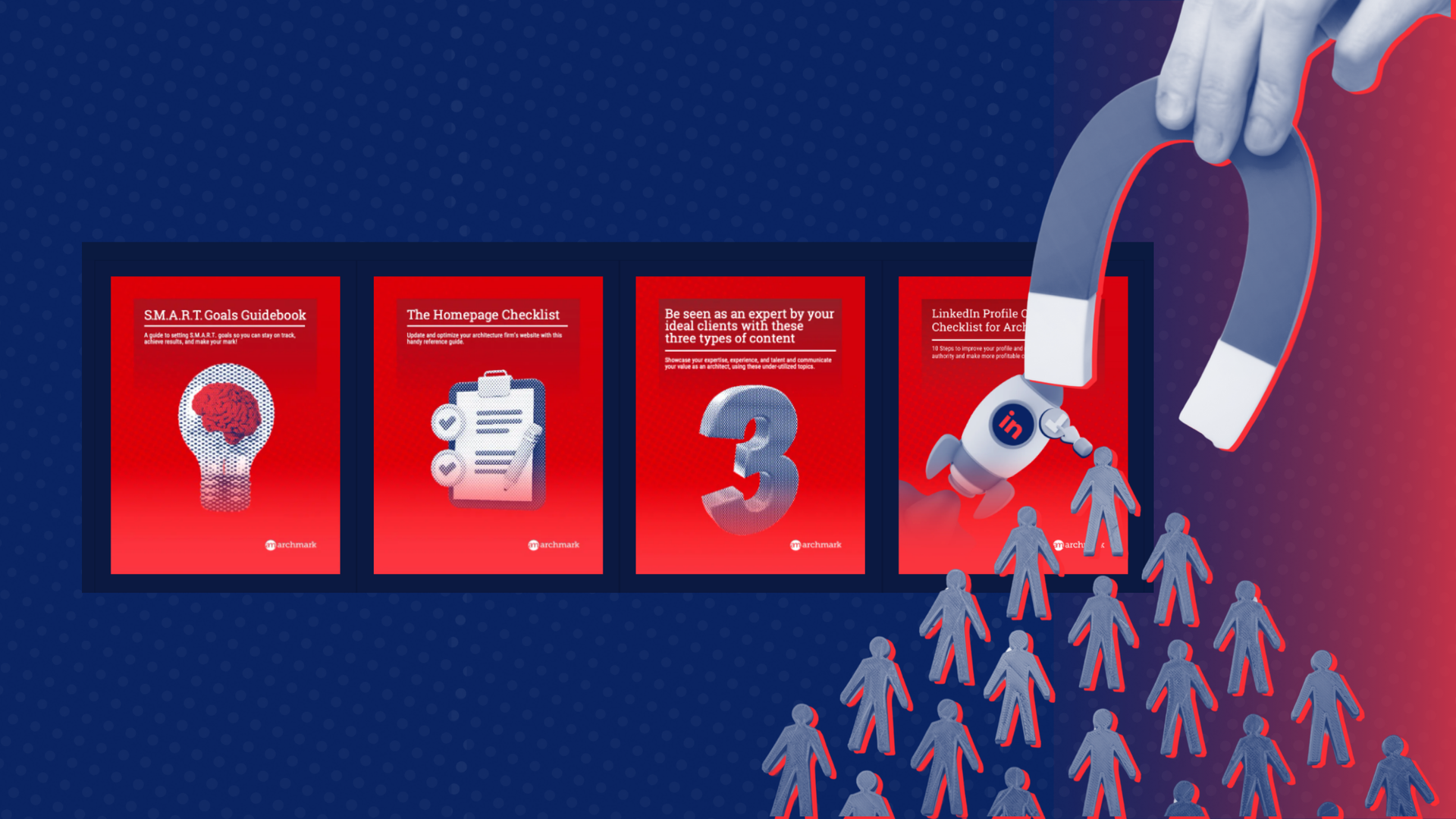Is Your Architecture Firm’s Website Costing You Projects?
What We Learned From Analyzing 2,305 Architecture Firm Websites
For most architecture firms, websites are often treated like digital portfolios; a place to showcase past work and look somewhat credible to prospective clients.
Box checked, right?
But what if your website could do more than that?
What if it could actually help you attract new leads, build trust, and turn passing interest into actual project inquiries — consistently?
That’s the question we set out to answer in our latest industry report, developed in partnership with BQE CORE:
"From Portfolio to Pipeline: How to Turn Your Architecture Firm’s Website into a Business Development Engine."
And after analyzing 2,305 architecture firm websites, we found a clear pattern:
Most firms are missing key opportunities — and in many cases, their websites are quietly holding them back.
The Reality: Most Architecture Firm Websites Are Underperforming
We reviewed websites across the U.S. and Canada, measuring performance in five key areas:
- Search visibility
- Content quality
- User experience
- Technical performance
- Lead conversion
Here’s what we found:
- 85% of websites scored below 60 out of 100
- 88% failed basic SEO tests, like missing or ineffective title tags
- 87% had too little content to rank well in search or communicate value clearly
- 36% didn’t display a phone number or office address on their homepage
- 48% had no analytics installed, meaning no way to measure or improve performance
- And only 12% had a properly written, optimized title tag on their homepage, the most basic SEO element
These are not small details.
They’re signals that shape how (or if) potential clients discover your firm, and whether your site builds confidence or causes hesitation.

Why This Matters More Than Ever
You’ve probably heard, or said, this before: “We don’t need to worry about marketing. All our work comes from referrals.”
And that may be true.
But here’s what the data says:
- Over 80% of AEC buyers visit a firm’s website before reaching out, even if they got a referral
- 63% of decision-makers search online to evaluate potential providers
- And in residential markets, 60% of homeowners still do online research, even after getting a recommendation
Your website is the first “conversation” most prospective clients will have with your firm. If it’s not working to engage and inform them, you’re likely missing opportunities you don’t even see.
The Good News: Most Issues Are Fixable
One of the biggest insights from this study?
You don’t need a full website overhaul to see improvement.
The report outlines a phased roadmap that any architecture firm can follow, starting with simple, high-impact fixes you can implement right away.
You’ll learn:
- How to optimize your content and site structure for search visibility
- What to include on your homepage to build trust and convert visitors
- How to improve load times, mobile experience, and overall site performance
- Where your site may be leaking leads, and how to fix it
- And how to track performance, so you can stop guessing and start improving

See What Happens When Firms Get It Right
We’ve seen firsthand how the right improvements can deliver big results:
One mid-size commercial firm increased their monthly website traffic by 255% — and attributed over $1.2 million in new project wins to the improvements they made based on this audit.
The best part?
They didn’t rebuild their site. They just followed the roadmap.
Ready to See How Your Firm Stacks Up?
- Understand how your website compares to industry standards
- Identify the blind spots that may be hurting your marketing
- Take action to turn your site into a more effective business development tool
What You’ll Learn in the Report
- The most common website mistakes architects make — and how to avoid them
- How to benchmark your site against 2,305 firms across North America
- The five phases of website improvement that work (without a full rebuild)
- What today’s architecture clients expect from your online presence
- How to get more visibility, more inquiries, and more project opportunities — with less guesswork













